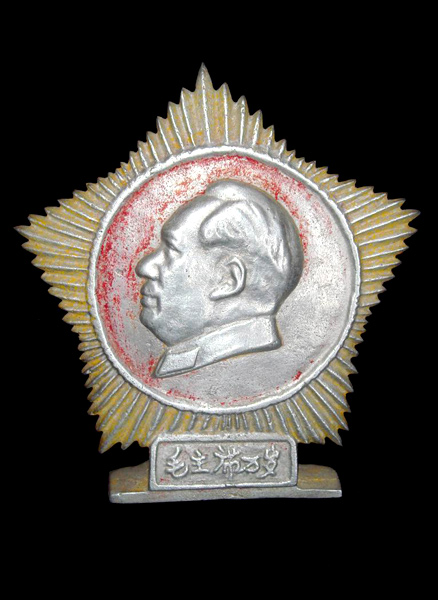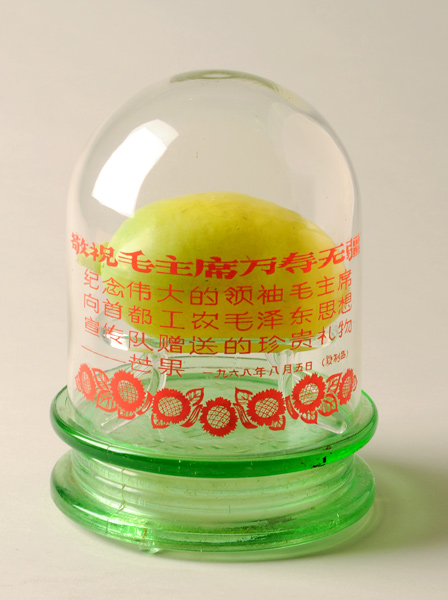Archive: Mao as Icon
1 | 2 | 3 | 4 | 5
By some estimates, 2.2 billion portraits of Chairman Mao were produced during the Cultural Revolution. Mao’s portrait was printed on the cover of the Little Red Book and was displayed in factories and at significant sites such as Tiananmen Square. As the Cultural Revolution unfolded, Mao’s image became a regular presence in every home, either in the form of posters or statues. Formal Mao portraits often occupied a central place on family altars, underlining the already god-like status of Mao as he was depicted in posters and paintings.
In the early 1990s, a resurgence in the belief of the protective qualities of Mao icons coincided with the centenary celebration of his birth. In the wave of nostalgia that followed, the interest in Mao memorabilia was resuscitated, resulting once again in the production of thousands of household objects with Mao imagery.
Intro | Mao | To Rebel | Never Forget | Up to the Mountains | Archive | Long March


